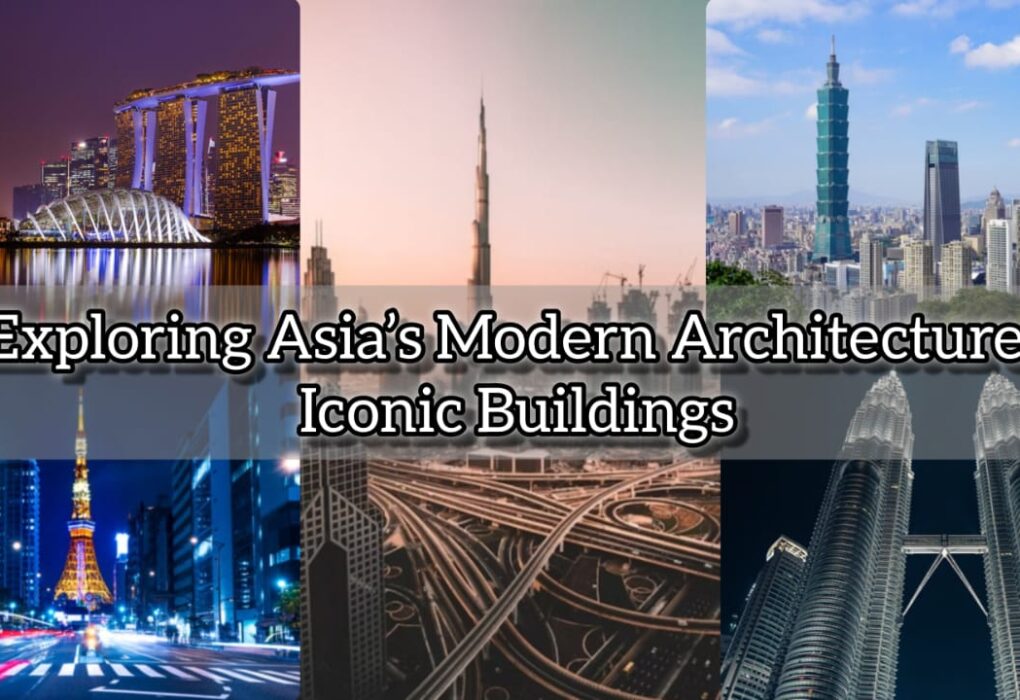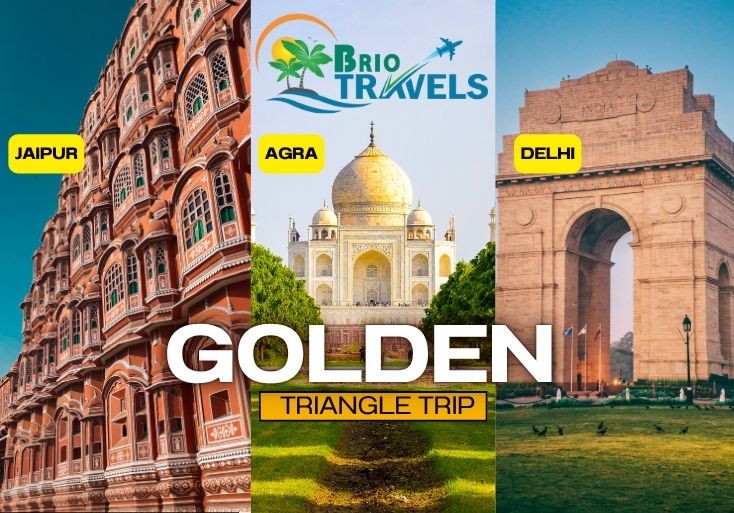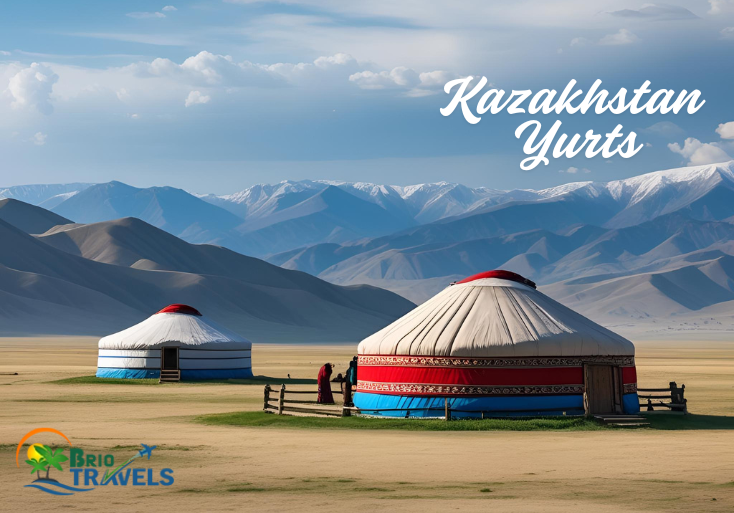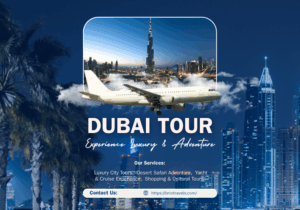Exploring Asia’s Modern Architecture: Iconic Buildings
Introduction
Asia still somehow holds a unique architectural couch where history and future meet and are celebrated by travelers from across the world.
In cities close to ancient temples, one wonders at the sight of skyscrapers entering into the clouds.
What an extraordinary mixture of tradition and modernism for the sake of similes!
Tokyo, Singapore, and Dubai, with sky-piercing design and execution, are in their own way giving a facelift to the idea of a modern architecture in Asia.
Besides these high-rise towers, museums with scientific installations and landmarks stand as cultural symbols of identity, technological upheaval, and ultra-modern design.
As a matter of fact, these architectural wonders shape the cultural and economic spheres of a country, turning Asia into a beautiful and ever-changing canvas of modern design.
The Brio Travel Agency specializes in offering unique architectural tours within Asia, giving any traveler a chance to fully experience these wonders.
Whether for an architect or for a history lover; for the practically minded and passionately interested conscious, Brio’s carefully itinerated programs promise a truly enriched experience of Asia’s major architecture.
Head out with experts with the Brio Travel Agency to delve into the energetic vision of Asian modernism!
The Rise of Modern Architecture in Asia
Asia’s architectural evolution has been a constantly evolving process, starting from the intricate and minute detailing of traditional craft to the bold statements of modern architecture in Asia.
While ancient structures, castles, palaces, and temples still stand tall as heritage monuments, the last couple of decades have immensely witnessed a shift toward modernism with its slick, often daring designs.
This transformation has gone hand in hand with rapid urbanization, economic growth, and technological integration.
Cities, including Shanghai, Seoul, and Kuala Lumpur, are finding their own ways of experimentation with high modern styles that marry sustainability to an en vogue futuristic look.
Experimentation with materials, digital modeling, and green building methods allow architects to come up with designs that are not only picturesque but also environmentally friendly.
Asian architecture draws growing inspiration from native art, religion, and nature, eventually giving birth to a really distinctive style of architecture that acts as a fusion of vernacular motifs with global language.
To cite an example, the bamboo-like form of Taipei 101 amalgamates a celebration of the environment with symbolic transcending of culture.
Asia establishes itself as the global architectural hotspot by carrying the synthesis of past with future and East with West.
The continent offers an enchanting palette for architectural experimentation, where tradition engages ambitions in the most imaginative manner.
For any architecture aficionado, Asia is not just a destination on the map-it is an orchestrated experience in
Top 10 Iconic Modern Buildings in Asia
Burj Khalifa, Dubai (UAE)
Constructed by Adrian Smith of Skidmore, Owings, and Merrill, the Burj Khalifa stands at 828 meters as the tallest in the world.
This architectural wonder stands as an expression of Dubai’s ambition and rapid modernization.
It has been inspired by Islamic architecture and is characterized by a Y-shaped tripartite floor geometry optimizing the views and areas.
The hotel has luxurious apartments and office suites, plus the highest observation deck in the world, helping to make it a cultural and economic landmark.
Explore Brio Travel’s exclusive Dubai tour package and experience this architectural wonder up close.
Taipei 101, Taiwan
This structural masterpiece and symbol stand tall at 508 meters.
Conceived by C.Y. Lee & Partners, its tiered structure is reminiscent of a bamboo stalk, a symbol of strength and growth.
It was the tallest green building in the world and continues to be a forerunner in sustainable architecture.
The building has melded ancient symbolism with contemporary design to bestow Taipei with unrivaled views.
Petronas Towers, Malaysia
It was César Pelli who designed the twin Petronas Towers in Kuala Lumpur.
Standing at 452 meters tall, their glass and steel facades incorporate motifs from Islamic art, representing Malaysia’s cultural heritage.
There is a skybridge between the two towers, giving them panoramic views of the city while symbolizing unity and advancement.
These towers remain the defining features of the Malaysian modern cityscape.
The Marina Bay Sands, Singapore
Conceived by Moshe Safdie, Marina Bay Sands is luxury and innovation redefined. Its three towers are interlinked by the SkyPark, which features an infinity pool, gardens, and an observation deck.
Along Singapore’s waterfront, it merges shopping, dining, and entertainment with architectural genius.
The futuristic silhouette of the resort has become emblematic of the city.
Shanghai Tower, China
Gensler’s Shanghai Tower twists its way upwards to a height of 632 meters and is China’s tallest building.
It minimizes wind loads and maximizes energy efficiency. Green spaces, natural ventilation, and rainwater harvesting are part of its sustainable design.
The dynamic façade and environmental design make it a reflection of China’s architecture and environmental ambitions.
Lotus Temple, India
Situated in New Delhi, Lotus Temple was developed by Iranian architect Fariborz Sahba.
With the shape of a blooming lotus flower, it consists of 27 marble-clad petals and operates as a Bahá’í House of Worship.
Open to all religions, the temple is a peaceful representation of harmony and peacefulness.
Blending spirituality with contemporary form, it represents beauty.
Tokyo Skytree, Japan
Standing at 634 meters, Tokyo Skytree is Japan’s tallest building. Nikken Sekkei designed it, blending neo-futurism with traditional Japanese style.
The tower is a broadcasting tower and a popular tourist destination, providing panoramic views and cultural displays.
It symbolizes Japan’s blend of technology and tradition.
Dongdaemun Design Plaza, South Korea
Late Zaha Hadid designed the Dongdaemun Design Plaza (DDP) in Seoul, a neo-futuristic cultural center.
With its smooth, curvaceous shape and LED-covered façade, the DDP serves as a venue for exhibitions, fashion shows, and creative events.
It occupies historic land and embodies Seoul’s dynamic mix of past and present.
The Interlace, Singapore
The Interlace, by Ole Scheeren and OMA, defies the convention of residential buildings.
Consisting of 31 stacked apartment blocks in a hexagonal formation, it encourages communal living with open spaces.
The groundbreaking design took the World Building of the Year award in 2015 and is a manifestation of innovative city living.
The Galaxy SOHO, China
Designed by Zaha Hadid Architects, Galaxy SOHO in Beijing features interconnected, flowing buildings with no corners or sudden changes.
Its organic shape echoes traditional Chinese courtyard buildings while welcoming futuristic architecture.
Galaxy SOHO contains offices, stores, and entertainment spaces, making for a fluid, multi-purpose area.
Why Go to These Architectural Wonders?
Traveling through Asia’s signature contemporary buildings provides tourists with more than visual delight it’s an adventure through the continent’s accelerated change and inventive spirit.
Every building is a visual testament to innovation, cultural assimilation, and social advancement.
These monuments are great places to take pictures, whether it’s the panoramic cityscape from Marina Bay Sands or the peaceful symmetry of the Lotus Temple.
Architecture fans get to see in person how modern architecture in Asia has accepted the futuristic idea and yet stayed true to the influences of tradition.
The environmentally conscious aspects of the Shanghai Tower or the Taipei 101 symbolisms show how architecture is science as well as an art form.
These structures are living museums and narrate the tales of aspiration, tenacity, and identity.
Additionally, these structures serve as cultural and recreational centers, featuring museums, exhibitions, and public events.
They provide an experience that combines appreciation of design with cultural experience.
Touring these landmarks allows visitors to learn how contemporary architecture mirrors Asia’s changing values and aspirations.
How Brio Travels Agency Enhances Your Architectural Tour
Brio Travels Agency takes your architectural tour to the next level by creating customized itineraries based on your interests.
If you’re interested in sustainable skyscrapers or cultural monuments, Brio makes sure you visit Asia’s architectural wonders with expert knowledge.
Their tours are guided by professionals who give detailed background information on each location’s design, history, and meaning.
Brio takes care of every aspect of your trip—from flights and hotels to private site access—so that you can have a seamless and enriching experience.
They work with local historians, architects, and guides to provide you with engaging encounters that are deeper than the surface.
With Brio, you’re not touring buildings; you’re connecting with the innovation and stories behind them.
Conclusion
Asia’s contemporary architecture is a reflection of ingenuity, tenacity, and cultural exchange.
From the Burj Khalifa’s towering elevations to Galaxy SOHO’s curvaceous lines, each building contributes another interesting page to the narrative of urban development.
Visiting these wonders serves to inspire a greater understanding of Asia’s innovative ethos and forward-thinking philosophy.
Brio Travels Agency invites you to join this architectural journey, in which each modern building in Asia is designed and developed carefully planned tours and enthusiastic guides, Brio makes your travel through Asia’s modern marvels inspiring and unforgettable.









